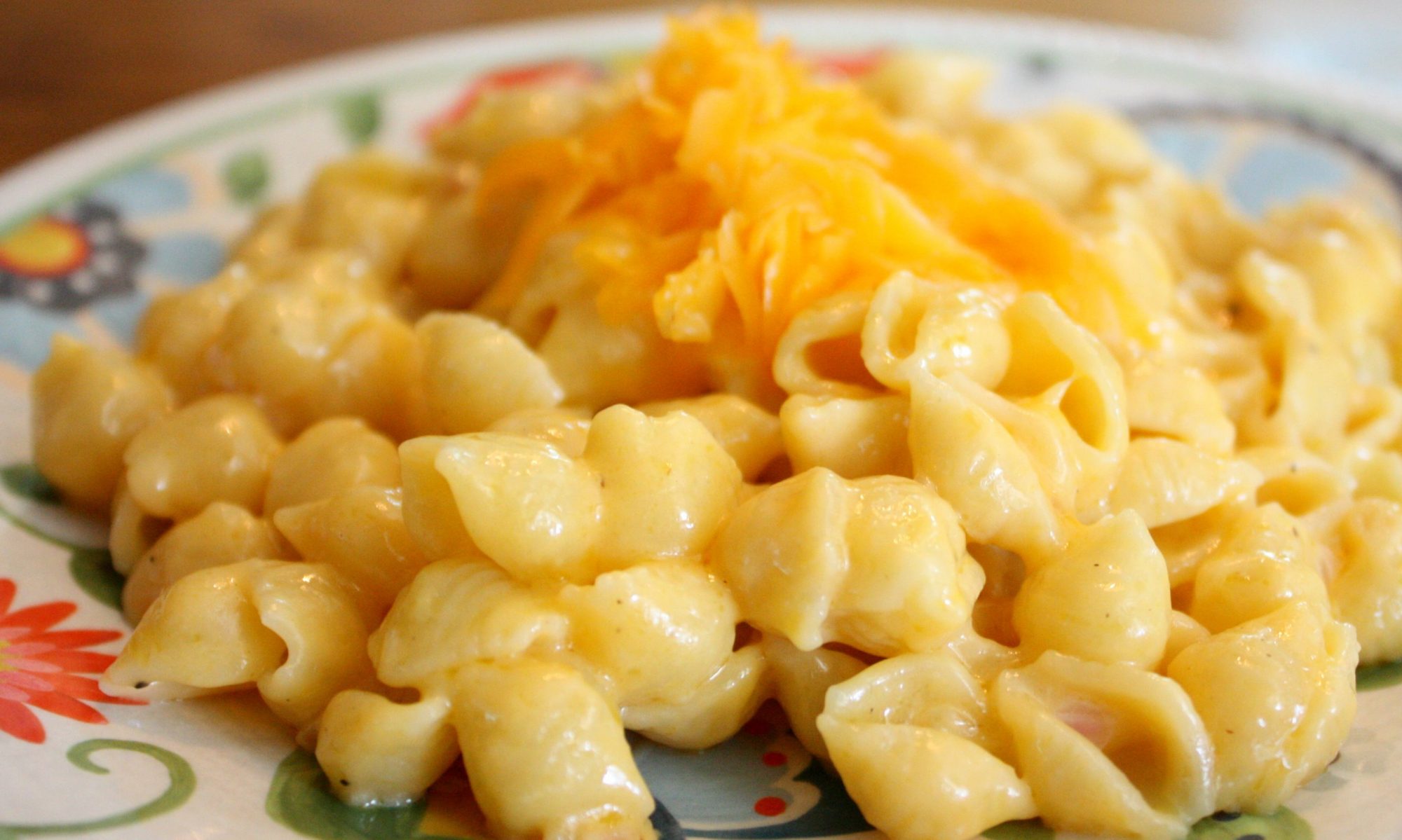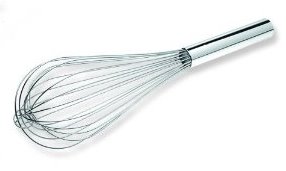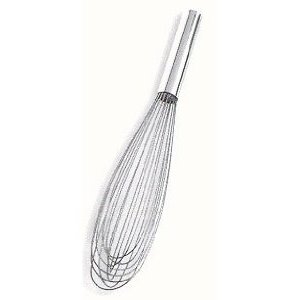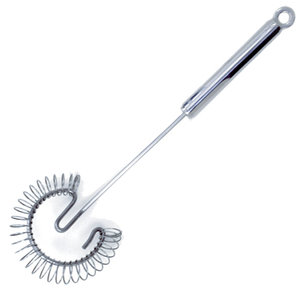A whisk is a cooking utensil used in food preparation to blend ingredients smooth, to incorporate air into a mixture, in a process known as whisking or whipping, or to finish any blending more quickly than a cumbersome mixer. Whisks are commonly used to whip egg whites into a firm foam to make the airiest meringue, or to whip cream into whipped cream.
Most whisks consist of a long, narrow handle with a series of wire loops joined at the end. Whisks have differently-shaped loops depending on their intended functions. Each type of whisk is designed for optimum stirring, mixing and blending, which is achieved through each shape of whisks unique wire design.
Balloon Whisk
The most common shape is that of a wide teardrop, termed a balloon whisk. Balloon whisks are best suited to mixing in bowls, as their curved edges conform to a bowl’s concave sides.
French Whisk
With longer, narrower wire loops, the French whisk has a more cylindrical profile, suiting it to deep, straight-sided pans.
Flat Whisk
A flat whisk, sometimes referred to as a Roux whisk, has the loops arranged in a flat successive pattern. It is useful for working in shallow vessels like skillets (in which a roux is normally prepared).
Gravy Whisk
A gravy whisk commonly has one main loop with another wire coiled around it.
Similarly, a twirl whisk has one single wire that is spiraled into a balloon shape.
Ball Whisk
Ball whisks have no loops whatsoever. Instead, a group of individual wires comes out of the handle, each tipped with a metal ball. The heavy balls are capable of reaching into the corners of a straight-sided pan. Since there are no crossing wires, the ball whisk is easier to clean than traditional looped varieties. Manufacturers of ball whisks also purport that their shape allows for better aeration.



